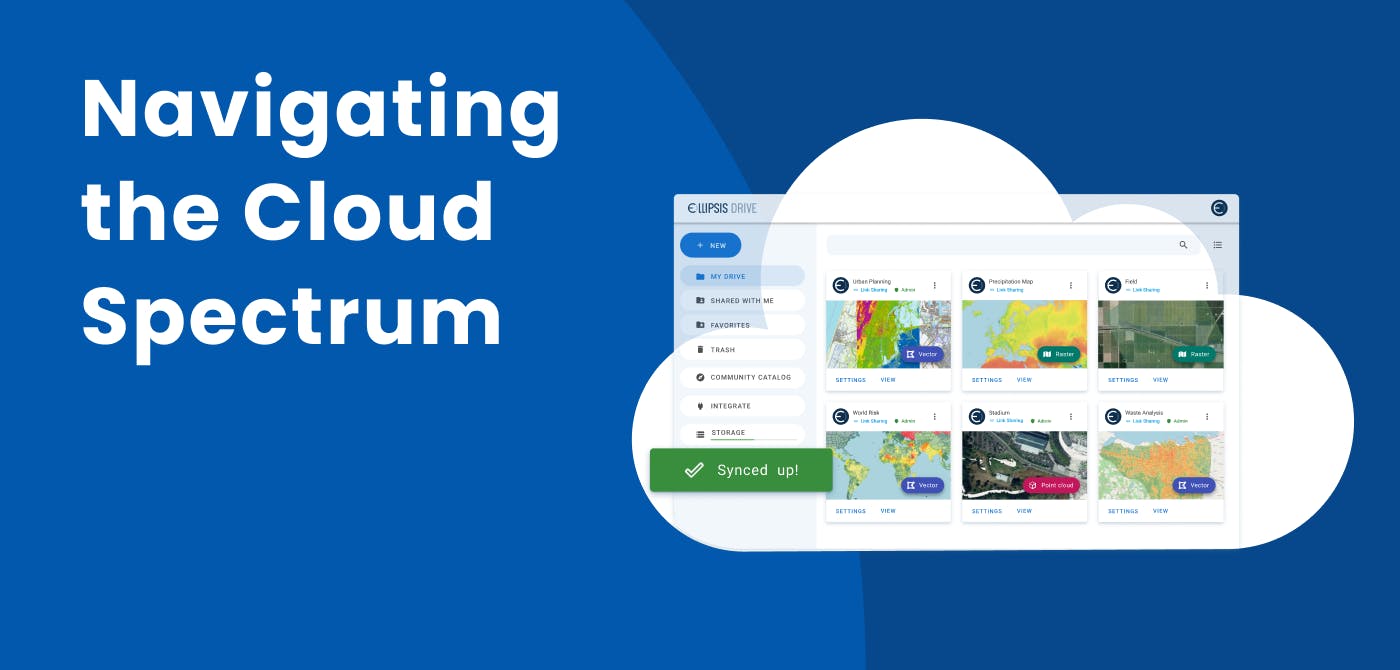GIS
A Future-Proof Spatial Data Infrastructure

Contents
Introduction
In an increasingly interconnected world, the significance of spatial data infrastructure (SDI) cannot be overstated. As our societies become more reliant on geospatial data for decision making, planning, and innovation, the need for a robust and adaptable SDI has never been more critical. But what exactly is spatial data infrastructure, and how can we ensure it remains resilient in the face of rapidly evolving trends in the geospatial ecosystem?
Let’s find out!
What is a Spatial Data Infrastructure?
A Spatial Data Infrastructure (SDI) is a skeletal framework of policies, technologies, and standards that facilitate the acquisition, processing, storage, distribution, and use of geospatial data and related products. In essence, it’s a system designed to efficiently manage and share geospatial data (and products) across multiple stakeholders within the ecosystem.
Various components make up a Spatial Data Infrastructure -
- Data: Geospatial data from innumerable sources such as satellite imagery, drones, survey data etc.
- Standards: Consistent formats, metadata standards, and protocols for interoperability and exchange.
- Technologies: Software tools, applications and platforms for data hosting, processing, visualization and collaboration.
- Policies: Legal and regulatory frameworks that govern data sharing, privacy, and security.
The benefits of having such a framework are -
- Reduced time and redundancy of data production
- Easy search and discoverability of existing geospatial data and services
- Maintaining data integrity and security
Before we build the case for a future-proof SDI, we need to understand the future trends that are likely to impact it. Let’s take a look at some of the key future trends within the geospatial ecosystem.
What are the future trends of the geospatial ecosystem?
The geospatial ecosystem is continually evolving, driven by rapid technological advancements, and changing user needs. Below are some of the key changes that are in motion right now and are quite likely impacting your business operations as we speak.
Increase in the volume & complexity of spatial data - The volume of spatial data being generated has increased at an exponential rate over the past decade. This added volume is being generated through countless different sources that contribute to the complexity.
Machine learning & smart analytics - Machine learning techniques are being integrated into geospatial analysis to automate processes, extract insights from large datasets, and improve the accuracy of spatial predictions and classification.
Integration with non-spatial datasets - In today’s age, information is being generated always, everywhere. This information is both spatial and non-spatial in nature. It is imperative for today’s decision makers to integrate these data sets in order to make the most accurate and effective decisions.
Open data initiatives - Governments and other business organizations are increasingly embracing open data initiatives to make geospatial data more accessible and interoperable in order to foster innovation and collaboration
Added privacy & security considerations - As geospatial technology becomes more pervasive, there is a growing need to address data ethics & privacy concerns and to ensure widespread access to geospatial data while minimizing potential negatives on stakeholders.
Having explored some of the key themes prevalent in the geospatial ecosystem today, let’s talk about what a future-proof SDI entails.
What is a future-proof spatial data infrastructure?
A future proof SDI is one that is designed to anticipate and adapt to the above mentioned trends and challenges in the geospatial ecosystem while remaining robust and flexible. It not only encompasses the traditional functions of data acquisition, processing and dissemination, but also integrates emerging technologies to ensure resilience over time.
Below are some of the features that could define a future-proof SDI -
- Interoperability & Open Standards: Adherence to open standards and protocols to facilitate seamless data exchange and interoperability amongst diverse systems and platforms.
- Scalability: Scalable cloud-based architecture in order to accommodate growing data volumes and user demands.
- Robust Data Governance & Security: Robust data governance frameworks to ensure data quality, integrity and accessibility while protecting sensitive information.
- Integration with Emerging Technology: Quick adaptation to new technological developments – such as Artificial Intelligence, Machine Learning, Virtual Reality and Internet of Things – for seamless integration.
- User-Centric Design and Accessibility: An intuitive interface that prioritizes user experience to enable widespread adoption and utilization.
Conclusion
As organizations and governments strive to harness the power of geospatial data for informed decision-making and sustainable development, investing in a future-proof SDI is a strategic imperative. By laying the groundwork for seamless collaboration, innovation, and data-driven insights, a future-proof SDI sets the stage for a more connected, and efficient future.,
A future-proof SDI is not merely a static framework, but a dynamic ecosystem that evolves in tandem with the rapidly changing trends and challenges of our time.
As we stand at the precipice of a digital revolution, let us heed the call to build a Spatial Data Infrastructure that transcends boundaries, empowers communities, and charts a course towards a brighter, more widely accessible future.
Liked what you read?

Subscribe to our monthly newsletter to receive the latest blogs, news and updates.
Take the Ellipsis Drive tour
in less than 2 minutes'
- A step-by-step guide on how to activate your geospatial data.
- Become familiar with our user-friendly interface & design
- View your data integration options

Related Articles

Navigating the Cloud Spectrum: From Generalist to Specialized, and the Perfect Middle Ground
The modern cloud ecosystem spans a wide spectrum of offerings, from general-purpose infrastructure to highly specialized platforms built for domain-specific tasks. At one end, generalist clouds provi
5 min read

Unlocking the Potential of Data: Comparing Tabular and Non-Tabular Protocols
The world of data is a complex landscape and each year, the complexity of that landscape grows exponentially. A combination of new data capturing technology, data processing technology and demands fo
6 min read

Understanding the importance of GIS in Urban Planning
Cities are robust places filled with life, but before it becomes a cosmopolitan paradise, plenty of ever-evolving complexities are happening behind the scenes to bridge the gaps and create an area spa
3 min read